With its long-range capabilities, endurance, and ability to operate in adverse weather conditions, the MQ 9 Reaper India plays a crucial role in modern military operations, providing persistent surveillance and lethal strike capabilities, making it an indispensable asset for armed forces worldwide. This drone development is so successful that it allows for precise reconnaissance of every action taken by enemies who are concealed below the horizon. Furthermore, if necessary, it can be given prompt orders to neutralize the threat if needed.
The Reaper, designed and developed by General Atomics Aeronautical Systems Inc. (GA-ASI), is a remotely piloted vehicle and aircraft (RPV/RPA) primarily intended for the United States Air Force (USAF).
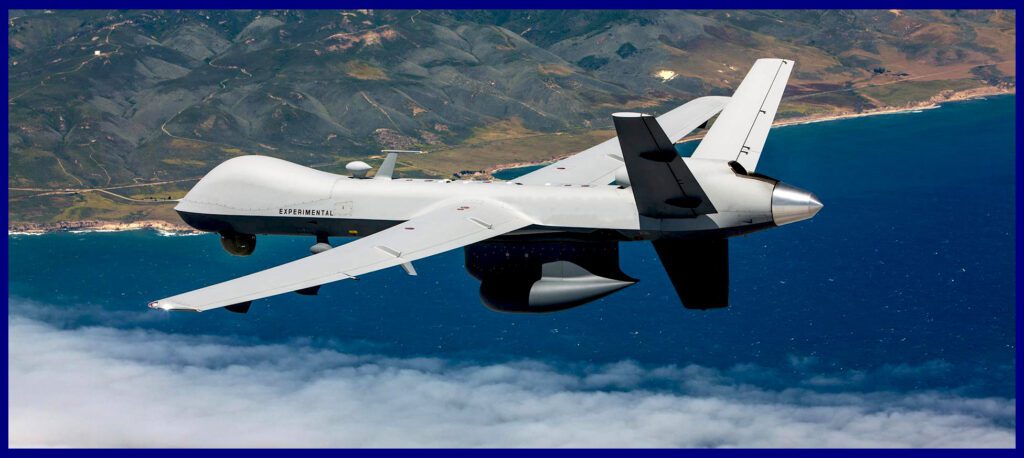
The MQ-9 represents a groundbreaking development as the first hunter-killer unmanned aerial vehicle (UAV) designed for high-altitude, extended observation missions. Similar to the General Atomics MQ-1 Predator, the MQ-9 can be operated using the same ground control systems. However, the Reaper stands out as a larger, heavier, and more powerful aircraft when compared to the Predator. While the Predator relies on a 115 horsepower (86 kW) piston engine, the Reaper is equipped with a robust 950 shaft horsepower (712 kW) turboprop engine
Thanks to its more powerful engine, the Reaper can cruise at a speed nearly three times that of the MQ-1, all while carrying a payload capacity for ordnance that is fifteen times greater. Aircrew in the Ground Control Station (GCS) manage all aspects of the Reaper, including the deployment of weapons.
About the Design and Development of MQ-9 Reaper
A typical MQ-9 system includes multiple aircraft, a ground control centre, a communication apparatus, spare maintenance personnel, and spare parts. Pilot, sensor operator, and mission intelligence coordinator comprise the flight personnel of a military aircraft. The aircraft is equipped with a 950 horsepower (712 kW) turboprop engine, which is capable of propelling it to a maximum speed of 480 km/h and sustaining a cruise speed between 280–310 km/h.
The MQ-9 can carry a variety of weapons, including 500 lb ( 230 kg ) laser-guided bomb packages and Hellfire missiles, and has a maximum payload of 3,800 lb ( 1,700 kg ) with a wingspan of 66 feet ( 20 m ). If it is carrying a full load of weaponry, its endurance drops to 23 hours from 30 hours when doing ISR missions. The Reaper is particularly suitable for long-term loitering operations, both for observation and support of ground troops, with a range of 1,200 mi ( 1,900 km ) and an operational altitude of 50,000 ft ( 15,240 m ).

When necessary, an MQ-9 may adopt different mission kits and payload arrangements of weapons and sensors. The aircraft is also outfitted with the Lynx Multi-mode Radar, which includes ground moving target indication (GMTI), Dismount Moving Target Indicator (DMTI), and Maritime Wide-Area Search (MWAS) capabilities. Synthetic aperture radar (SAR) is another feature of the radar, and it can operate in both spotlight and strip modes.
The MQ-9A continues to undergo improvements and advancements, ensuring its alignment with the evolving needs of its customers. The MQ-9A Extended Range (ER) has been developed with field-retrofittable enhancements, including wing-mounted fuel pods and reinforced landing gear. These upgrades extend the aircraft’s already impressive endurance from 27 hours to 34 hours, enhancing its operational versatility. The MQ-9A has been procured by various organizations, including the U.S. Air Force, the U.S. Department of Homeland Security, NASA, the Royal Air Force, the Italian Air Force, the French Air Force, and the Spanish Air Force.
In accordance with a deal with General Atomics, the USAF had received 287 of the 366 MQ-9 Reapers as of 2018. Including foreign military sales, the program’s overall cap is set at 433.
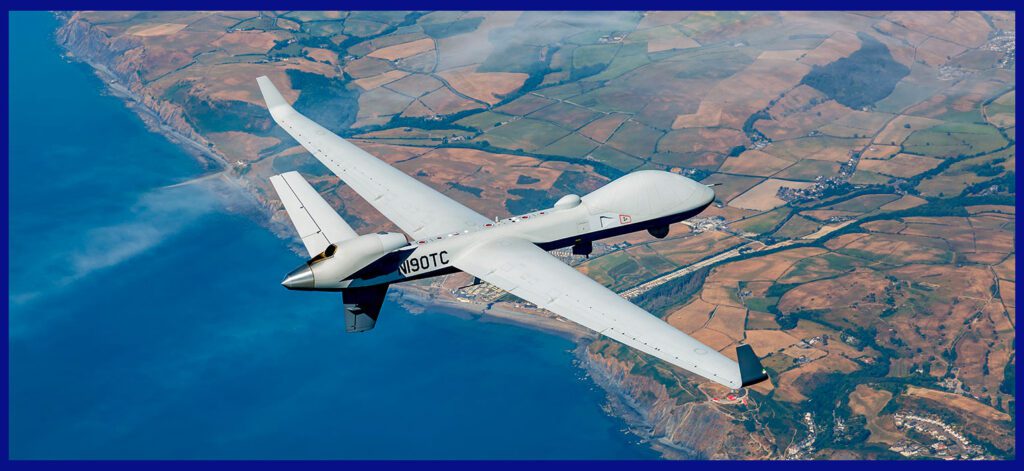
For Indian Use: Since Nov. 2020 the Indian Navy has taken Two of these drones on lease. The procurement of the MQ-9 Reaper is one of the options scheduled for discussion in the Defence Acquisition Council ( DAC ), according to a New Indian Express article. This drone will be used for surveillance, gathering intelligence, and targeted attacks. Also, naval ships and ground stations are capable of controlling it.
The Indian government is reportedly planning to purchase approximately 33 MQ-9 Reaper drones, with 11 intended for each of the Indian Air Force (IAF), Indian Navy, and Indian Army. However, as of March 2023, the deal had not been finalized. Price negotiations were still in progress as of August 2023.
MQ-9 Reaper Variants: SeaGuardian, SkyGuardian, MQ-9 Block-5 & Protector
SeaGuardian: For the U.S. Navy’s Broad Area Maritime Surveillance (BAMS) programme, Mariner, a navalized Reaper, was suggested. For an endurance of up to 35 ( max ) hours, it had a larger fuel capacity. There were a few variations, including one designed for aircraft carrier operations with folding wings for storage, shortened, reinforced landing gear, an arresting hook, reduced or removed ventral flight surfaces, and 9 stores pylons for a total load of 4,750 pounds ( 2,155 kilograms).
Two maritime versions of the MQ-9, known as Guardians, are used by US Customs and Border Protection (CBP). The United States Coast Guard reviewed the Guardian and collaborated with CBP during this process. From land-based stations in Florida and Texas, CBP and the Coast Guard jointly operate one MQ-9 Guardian.
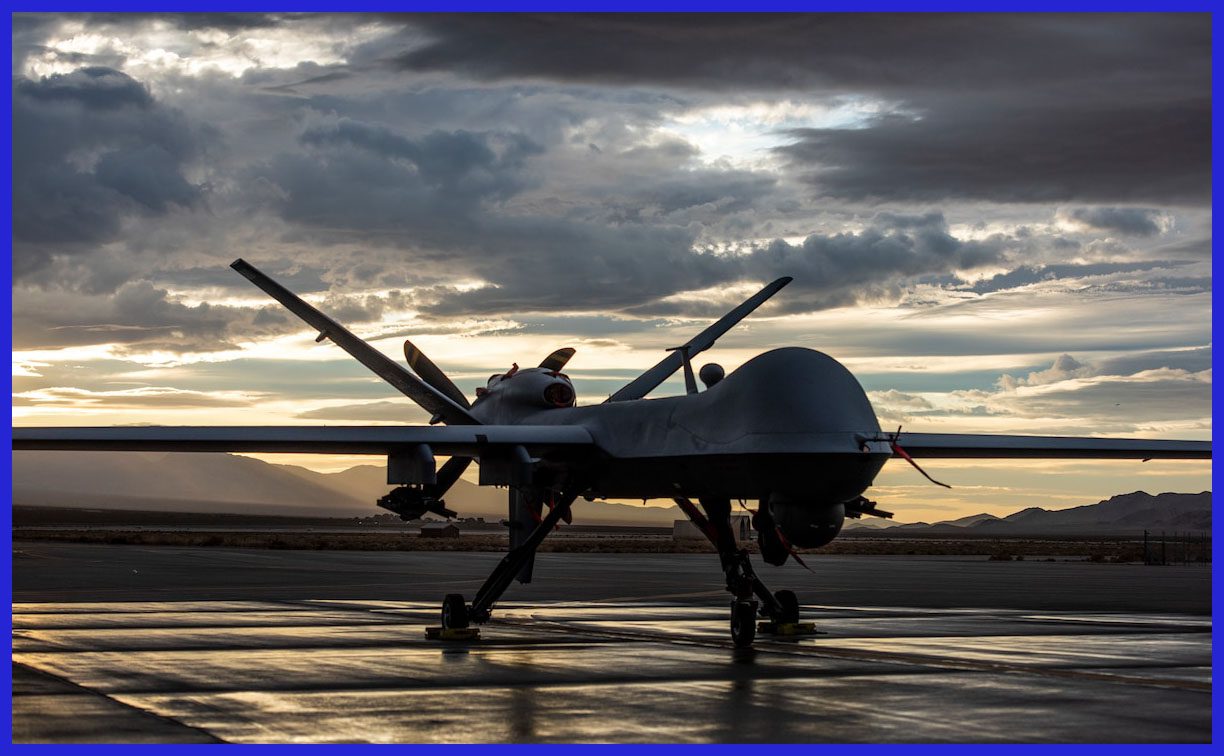
In order to demonstrate its capability to transport, manage, and transmit data back to the ground station through a SATCOM link, General Atomics looked into testing a sonobuoy launch capability from the Guardian in 2016. A company-owned Reaper tested dropping sonobuoys and using the data they collected to monitor a training target in November 2020.
This resulted in the development of the first self-contained anti-submarine warfare ( ASW ) package for the SeaGuardian. The package includes a sonobuoy management and control system (SMCS) and podded sonobuoy dispenser systems (SDS), which can launch up to four pods at once. Each pod may launch 10 A-size or 20 G-size buoys using a pneumatic launch system.
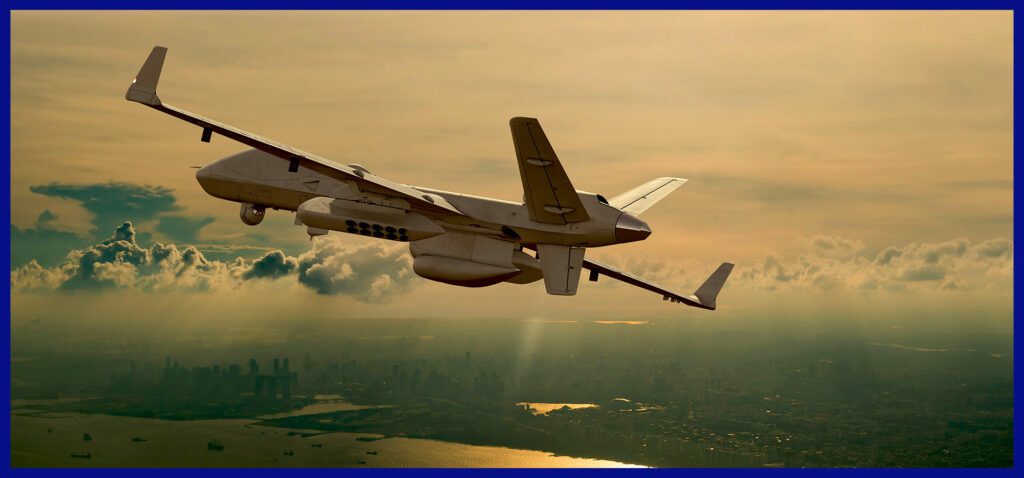
SkyGuardian: MQ-9B represents the latest generation of remotely piloted aircraft systems (RPAS). This advanced system, known as SkyGuardian, offers global and persistent intelligence, surveillance, and reconnaissance (ISR) capabilities. SkyGuardian enables joint military and civil authorities to obtain real-time situational awareness worldwide, regardless of the time of day or night. It achieves this by flying over the horizon via satellite, allowing for missions lasting over 40 hours, and ensuring safe integration into civil airspace, even in adverse weather conditions.
The aircraft features an innovative Lynx Multi-mode Radar, an advanced electro-optical/infrared (EO/IR) sensor, autonomous takeoff and landing capabilities, and a wingspan that is 79 feet longer than its predecessors. SkyGuardian’s industry-leading durability and superior surveillance capabilities significantly enhance its multi-domain task sets. Moreover, the platform seamlessly integrates with other platforms, systems, and podded technologies employed by its users, further extending its capabilities.
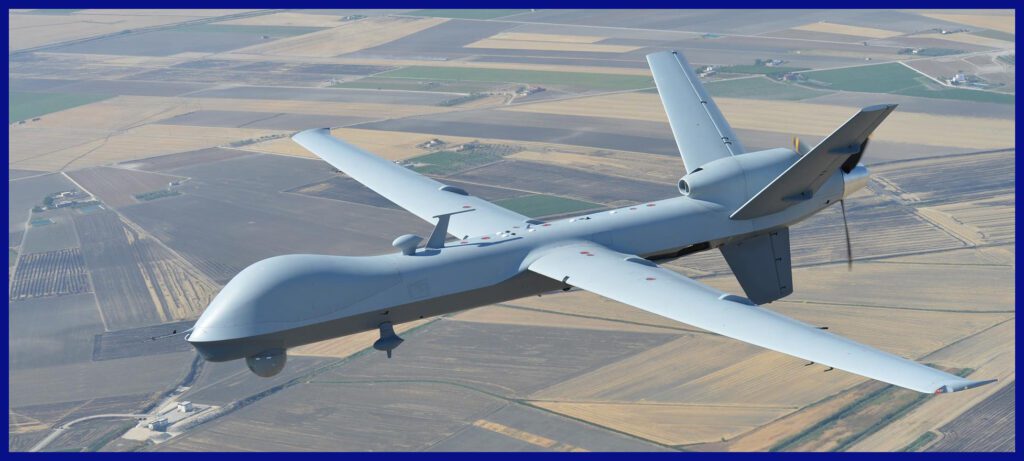
MQ-9 Block-5: General Atomics successfully completed the first flight of its improved MQ-9 Block 1-plus Reaper on May 24, 2012. The Block 1-plus version was created to have enhanced electrical power, secure communications, autonomous landing, higher gross takeoff weight (GTOW), room for growing weaponry, and simplified payload integration possibilities. Three independent power sources improve the electrical power system’s reliability. A new high-capacity starting generator delivers greater electrical power capacity to provide growth capacity. A backup generator is also available and is adequate for all flight-critical operations.
New communication capabilities, such as dual ARC-210 VHF/UHF radios with wingtip antennas, provide secure data linkages and greater data transmission capacity, as well as simultaneous communications between various air-to-air and air-to-ground parties. The redesigned main landing gear with a trailing arm allows for the transport of larger payloads or more fuel. General Atomics received a $377.4 million contract from the USAF on October 15th, 2013, for 24 MQ-9 Block 5 Reapers.

Protector: This is Designed and developed for the UK. The Certifiable Predator B was one of many unmanned aerial vehicles (UAVs) that the UK planned to purchase for the Royal Air Force as part of its Protector MALE ( medium altitude long endurance ) UAV programme in April 2016.
By 2025, it is intended to replace all ten MQ-9A Reapers with a minimum of 20 Protector systems, as stated in the 2015 Strategic Defence and Security Review. Furthermore, according to the source, the Protector will be able to transport up to 18 Brimstone 2 missiles or Paveway IV bombs.

MQ-9A Reaper Specifications
- Crew: 2 For Ground Station Container
- Length: 36 ft 1 in (11 m)
- Height: 12 ft 6 in (3.81 m)
- Wingspan: 65 ft 7 in (20 m)
- Empty Weight: 2,223 kg ( 4,901 lb )
- Max takeoff weight: 4,760 kg ( 10,494 lb )
- Powerplant: 1 × Honeywell TPE331-10 turboprop engine
- Fuel capacity: 1,769 kg ( 3,900 lb )
- Maximum Speed: 482 km/h ( 300 mph )
- Ferry range: 1,900 km ( 1,200 mi )
- Endurance: 30 hours ( 14 hours fully loaded with arms )
- Service ceiling: 50,000 ft ( 15,240 m )
- Payload: 1,700 kg ( 3,800 lb )
- Hardpoints: 7 in total ( 3 + 3 wing, 1 centerline ) with provisions to carry combinations of ASM ( Hellfire, Brimstone ) & Bombs ( Paveway, JDAM ) + Testing is underway to support the operation of the Air-to-Air Stinger missile as well, after the incident of interception of a Reaper in the Black Sea by Russian SU-27 on 14 March 2023.
Moreover, do not miss the golden opportunity to own exquisite and awe-inspiring scale models of the General Atomics MQ-1 Predator, MQ-9 Reaper, and X-47B Pegasus UCAV, which are conveniently available exclusively on AirModels. These remarkable and iconic military UAVs boast impeccable track records and are now available for purchase with worldwide delivery. Click here now to secure your piece before the limited stock is depleted.

In conclusion, the MQ-9 Reaper represents a remarkable achievement in unmanned aerial technology. With its impressive range, endurance, and payload capacity, this versatile drone has become a cornerstone of modern military and intelligence operations. Its ability to operate at high altitudes and for extended durations provides persistent surveillance capabilities, facilitating the collection of critical intelligence and the execution of precision strikes with guided munitions.
The MQ-9 Reaper serves as a prime example of the synergy between human operators and cutting-edge technology, demonstrating how unmanned systems can extend the reach and capabilities of armed forces while mitigating risks to personnel. Its adaptability and scalability render it a valuable asset for a wide spectrum of missions, ranging from intelligence gathering to close air support.
As technology continues to advance, it is likely that the MQ-9 Reaper will undergo further enhancements and refinements, solidifying its role as an indispensable tool for upholding security and stability in an ever-evolving world.
Important Announcement for Our Valued Readers!
After an article is published, it is possible that updates or changes may have occurred beyond the time of publication. Therefore, it is important to be aware that certain information in the article might be outdated. To ensure the most accurate analysis, it is highly recommended to verify the content with the latest sources available.
However, we are dedicated to delivering outstanding articles on military products and global updates. Maintaining quality and smooth operation requires resources. Your support sustains our efforts in providing insightful content. By purchasing high-quality products through our affiliated links, you help us keep our platform alive and acquire top-notch items. Your unwavering support is invaluable and inspires us to strive further.
We welcome your suggestions and requests for more information, as we value feedback from our readers. If there’s specific defence material or equipment not covered on our site, please share your request in the comments. We’ll strive to research and provide the required information. We sincerely thank you for your unwavering interest in our website, and we eagerly anticipate hearing from you! Enjoy your reading experience!
